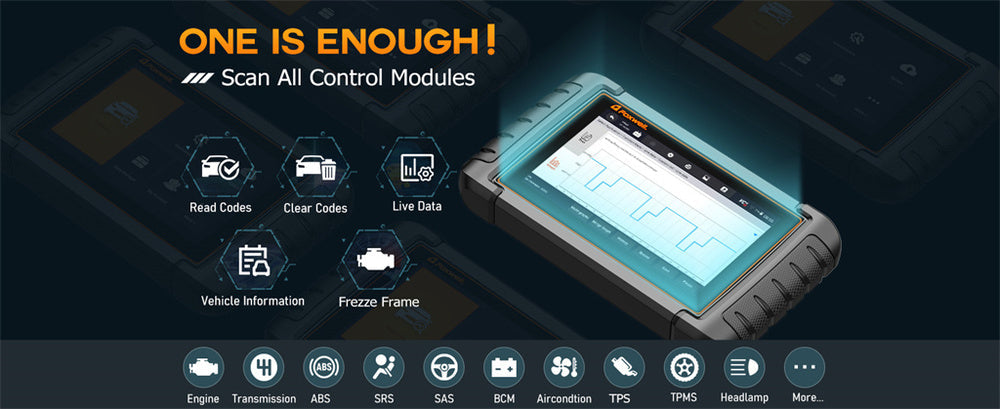Are you ever puzzled about what's happening underneath the hood when your automobile's engine is acting up? One perpetrator that regularly goes unnoticed is the Evaporative Emission Control (EVAP) gadget—an unsung hero working hard to keep your gas vapors in check and the environment a bit cleaner.
But like every unsung hero, it's susceptible to occasional breakdowns. Let's break down the five telltale signs and symptoms your EVAP machine might be giving up and what you can do about it.
The Check Engine Light Says "Hello"

First, permits communicate approximately that pesky Check Engine Light (CEL). That little mild pops up on your dashboard like an uninvited visitor at a party. Sure, it may mean a variety of factors.
However, one of the most common reasons for the CEL to light up is the hassle of the EVAP system. Whether it's a leaky hose, a horrific sensor, or a caught valve, your car's brain (aka the ECU) will name out the EVAP gadget for interest.
What to do? Don't panic! Seek the aid of a mechanic or use a device like the Foxwell NT726 OBD-II Scanner to carry out a brief diagnostic.
This device will provide an in-depth code of what is incorrect with your car, helping you determine whether the EVAP machine is the perpetrator. By diagnosing the trouble yourself, you can make knowledgeable decisions about what to restore.
A Whiff of Gas Everywhere
Fuel ought to scent nicely, so if you're getting a gas smell every time you step out of the automobile, something's no longer correct. When the EVAP system leaks, it's like leaving a window open in your private home at some point of a storm—the vapors break out, and the odor wafts right into your nostrils.
Usually, this takes place across the gasoline tank or the charcoal canister, and it could be particularly robust when it's warm out of doors (way to the warmth, making the fumes evaporate quicker).
What to do? Check for leaks within the EVAP machine's hoses or components. If you discover a crack or an unfastened hose, it's time to repair it. A mechanic might conduct a "smoke check" to pinpoint the exact leak—agree, it's more incredible than it sounds.
Starting Your Car Feels Like a Struggle
If you're having trouble starting your vehicle or your engine feels like it's about to stall out while you allow it to idle, it won't simply be an awful cup of espresso.
A defective EVAP system can mess with your engine's air-gas blend, causing your automobile to choke a little when it starts up. This happens because the system isn't handling the gasoline vapors nicely, and the engine gets a bit stressed.
What to do? It's time to check the EVAP device's purge valve, vent valve, and any associated elements. A diagnostic scan with the Foxwell NT726 can provide you with the best hassle codes, permitting you to discover whether the purge valve, vent valve, or every other element is at fault. Once you realize what needs to be constant, you may avoid unnecessary maintenance and get directly to the answer.
Fuel Economy Taking a Nosedive
People prefer to see their fuel gauge drop quicker than usual, and if you notice a worse gasoline financial system, the EVAP gadget is probably to blame. When the gadget isn't functioning well, your engine has to work harder to keep things moving, so more gas is burned for the same distance.
What to do? If your gas tank seems to drain faster than usual, get the EVAP machine checked. Replacing a leaky hose or fixing a faulty valve might simply restore your gas financial system to its best. Using a diagnostic device like the FoxNT726 will assist you in examining any issues that may point to troubles with the gasoline machine or the EVAP machine's components.
Emissions Test? Nope, Not Passing Today

Most states require your car to pass an emissions check before you can legally power it. Suppose your EVAP system is on the fritz; you are probably in trouble. Since this machine controls dangerous fumes from escaping, a defective one should effortlessly motivate you to fail the test—and get you caught in the emissions testing lane.
What to do? If you're failing the test, the EVAP gadget is frequently the first factor to test. Get your gadget looked at and ensure it's sealed up tight. Replacing or fixing parts like a broken purge valve or leaking hoses should assist you in bypassing that test with flying colors.
Using an OBD-II scanner like the Foxwell NT726 can help in perceiving the precise supply of the trouble, giving you the perception that you had to make the essential repairs before returning for a retest.
Conclusion
If your car's EVAP device is appearing up, it's more than just an inconvenience—it can harm your gas economy, engine performance, and even your environmental effect. Thankfully, diagnosing and solving EVAP issues must not be a primary headache.
Just watch out for those symptoms and get professional assistance assistance while wanted. With gear like the Foxwell NT726, you could effortlessly screen your car's health, diagnose issues early, and easily hold your EVAP gadget. It's better to nip the trouble inside the bud than permit it to fester—and your automobile will thank you by strolling more correctly and passing the emissions assessments like a champ.
FAQs
What happens when an EVAP solenoid goes bad?
A faulty EVAP solenoid can cause the Check Engine Light to turn on, fuel odors, poor engine performance, and failed emissions tests.
How do I know if my EVAP purge valve is bad?
Symptoms include rough idling, difficulty starting, the Check Engine Light illuminating, and poor fuel efficiency.
What happens if your EVAP canister is clogged?
A clogged canister can lead to fuel odors, engine stalling, difficulty refueling, and issues with emissions control.




Leave a comment
This site is protected by hCaptcha and the hCaptcha Privacy Policy and Terms of Service apply.